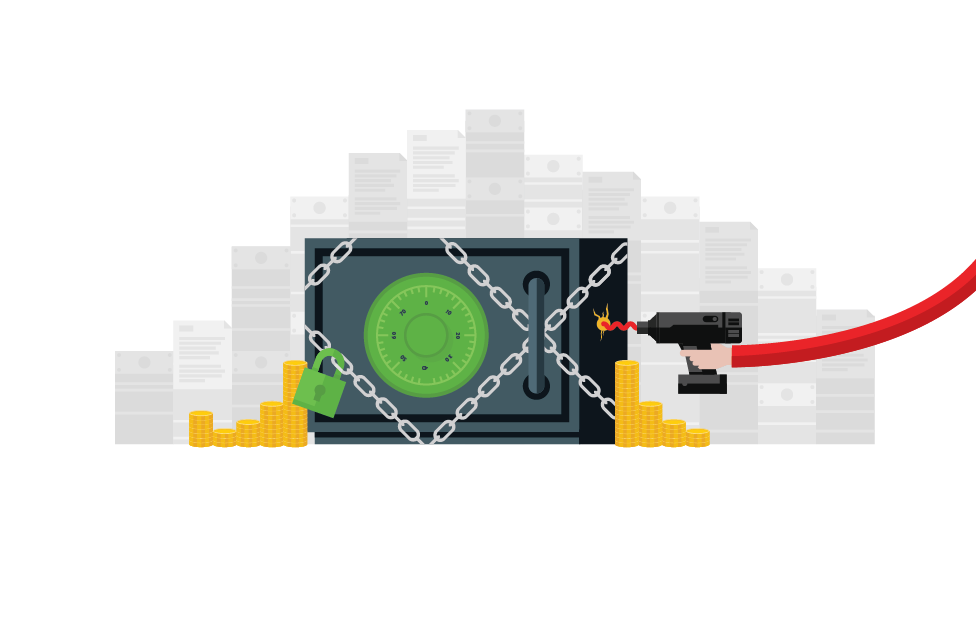The Evolution of Security #3: Safes
Information security has, by necessity, changed a lot from a strategic perspective. From physical walls to encoded maps to locks and chains, the way we defend against the age-old criminal must evolve to support the ways we interact with data today.
Now, as we enter into an era of Security 3.0 that must grapple with new security challenges introduced by BYOD (Bring Your Own Device) and the cloud, what kind of security solution can we turn to in order to protect our private company data?
Stay tuned: The answer will be revealed April 14!
Duo’s Creative team has taken on the task of depicting security throughout the ages with a series of original illustrations. Here’s the third in our Evolution of Security series:
Securing the Safe with Layers of Locks

Unearthed treasure relies on physical security controls more than ever - a safe is really just a mini-castle, constructed of impenetrable steel walls to deter burglars.
But instead of turrets and arrow-slinging, layers of locks keep the known valuables within from being easily swiped. A combination lock can only be opened by those that know the code, while chain locks accessible by the holder of the key.
Safes also emerged as a way to protect different items of value - instead of solid gold and silver bars, paper bills and sensitive documents must be protected from fires and destruction. Metal walls keep valuables safe from both natural disasters and criminals alike.
But locks alone won’t stop the determined...
Stay tuned to see the next phase of security evolution tomorrow!

